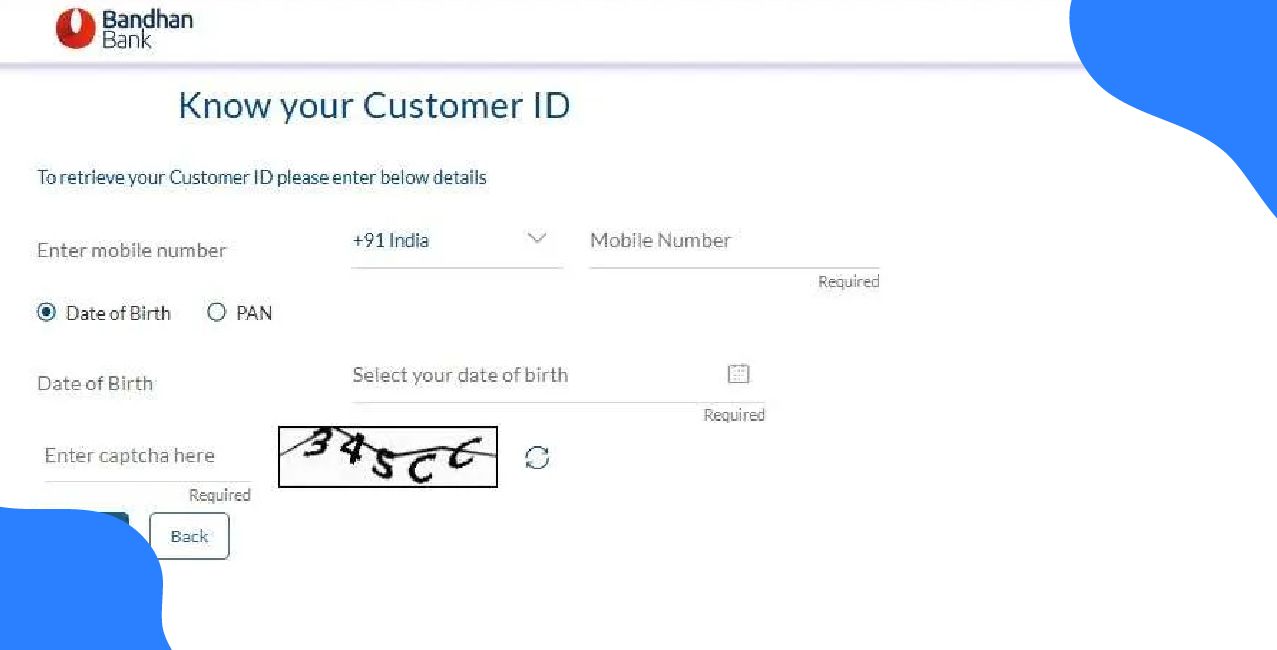
Author
LoansJagat Team
Read Time
7 Min
25 Jun 2025
How to Calculate Profit Percentage – Formula & Examples
Anjali, a 27-year-old creative entrepreneur from Pune, recently launched a small business selling handmade, eco-friendly journals. Passionate about sustainability and paper crafts, she began by investing ₹50,000 in raw materials, packaging, and initial marketing efforts. She worked tirelessly from her home studio, designing unique covers and binding each journal with care. Within a month, her hard work paid off—she sold 200 journals and earned a total revenue of ₹80,000.
Anjali was eager to find out how much profit her business made. "How much profit did I make?" she pondered. That prompted her to Google: "How to calculate profit percentage?"
If you ever started a small business or side hustle and were wondering the same thing, this guide will guide you through all that you need to know as it did for Anjali. From simple formulas to margin calculators, we have your profit math covered.
Understanding Profit Percentage
Profit percentage is a key indicator of a business's efficiency. It measures how much of your revenue turns into actual profit after deducting all costs. It helps in evaluating:
- Cost control
- Pricing strategy
- Business sustainability
Formula:
Profit Percentage = (Profit / Cost Price) x 100
Example:
Anjali, a 27-year-old from Pune, started a handmade journal business. She spent ₹50,000 on materials and operations and made ₹80,000 in sales.
- Profit = 80,000 - 50,000 = Rs 30,000
- Profit % = (30,000 / 50,000) x 100 = 60%
Industry-Wise Average Profit Margins
Industry | Average Profit Margin |
Retail (E-commerce) | 10% - 20% |
SaaS (Software) | 70% - 85% |
Food & Beverage | 5% - 15% |
Manufacturing | 8% - 12% |
Handicrafts (Like Anjali’s) | 20% - 30% |
What is a Margin Calculator?
A Margin Calculator is a digital tool that helps you calculate profit margin percentages. You enter your cost and selling price, and it gives you the margin instantly.
Key Inputs:
- Cost of Goods Sold (COGS)
- Selling Price or Revenue
Formula Used:
Profit Margin % = ((Selling Price - Cost Price) / Selling Price) x 100
Inputs and Outputs of a Margin Calculator
Input | Value (Example) |
Cost Price | Rs 500 |
Selling Price | Rs 800 |
Profit Margin % | 37.5% |
You can use online margin calculators like:
- Zoho Margin Calculator
- Shopify Profit Margin Calculator
- Investopedia Profit Calculator
Example:
Let’s say a company earned Rs 5,00,000 in revenue last quarter. The total cost involved, including salaries, raw materials, rent, and overheads, was Rs 3,50,000.
- Net Profit = 5,00,000 - 3,50,000 = Rs 1,50,000
- Profit Percentage = (1,50,000 / 3,50,000) x 100 = 42.86%
- Margin % = (1,50,000 / 5,00,000) x 100 = 30%
This shows that the company is doing well, with 30% of its revenue translating to actual profit.
Quick Tip:
Always compare your margin with industry benchmarks to remain competitive.
How to Calculate Profit Margin?
Profit margin shows the percentage of revenue that remains as profit.
Formula:
Profit Margin % = (Gross Profit / Revenue) x 100
Steps:
- Calculate Revenue: The Total amount earned from sales
- Calculate COGS: Direct costs of production
- Subtract COGS from Revenue to get Gross Profit
- Apply the Formula to find the margin
Example:
Revenue = Rs 1,00,000 COGS = Rs 60,000
- Gross Profit = 1,00,000 - 60,000 = Rs 40,000
- Profit Margin % = (40,000 / 1,00,000) x 100 = 40%
Profit Margin Scenarios
Revenue | COGS | Gross Profit | Profit Margin % |
100,000 | 60,000 | 40,000 | 40% |
150,000 | 90,000 | 60,000 | 40% |
80,000 | 50,000 | 30,000 | 37.5% |
How to Calculate Margin Percentage?
Margin percentage is often confused with profit percentage, but it focuses more on revenue.
Formula:
Margin % = (Profit / Revenue) x 100
Example:
Selling Price = Rs 200 Cost = Rs 120
- Profit = 200 - 120 = Rs 80
- Margin % = (80 / 200) x 100 = 40%
Read More: How to Start a Business – Step-by-Step Guide
Alternative Formula:
Margin % = ((Revenue - Cost) / Revenue) x 100
This method helps in sales strategy and pricing decisions.
Margin Calculation Formulas
Let’s summarise the different formulas used:
1. Profit Percentage:
Profit % = (Profit / Cost Price) x 100
2. Profit Margin:
Profit Margin % = (Gross Profit / Revenue) x 100
3. Margin Percentage:
Margin % = (Profit / Revenue) x 100 or ((Revenue - Cost) / Revenue) x 100
Use these formulas depending on whether you're focused on pricing, production, or total net gain.
Benefits of Using a Margin Calculator
1. Quick & Error-Free Calculations:
Saves time compared to manual math.
Calculating profit margins manually can be time-consuming and prone to human errors, especially when dealing with multiple products. A margin calculator automates this process and ensures precision.
Learn More: How to Calculate Company Valuation
Example:
Suppose you're selling three products:
- Product A: Cost = ₹150, Selling Price = ₹250
- Product B: Cost = ₹300, Selling Price = ₹420
- Product C: Cost = ₹500, Selling Price = ₹650
Using a calculator:
- Margin for A = ((250 - 150)/250) × 100 = 40%
- Margin for B = ((420 - 300)/420) × 100 = 28.57%
- Margin for C = ((650 - 500)/650) × 100 = 23.07%
Instead of doing all the math manually, you simply input the values into a margin calculator to get instant results.
2. Better Pricing Strategies:
Knowing your margin helps you set the right selling price. If your profit margin is too low, you may be underpricing your product. If it’s too high, you may be losing customers due to expensive pricing. A margin calculator helps you strike the right balance.
Example:
Let’s say your cost to produce a handmade candle is ₹100.
- If you sell it for ₹120, margin = ((120 - 100)/120) × 100 = 16.66%
- If you sell it for ₹200, margin = ((200 - 100)/200) × 100 = 50%
By using a margin calculator, you can test different price points to determine the most profitable and competitive rate. This helps in avoiding overcharging (which scares off customers) or undercharging (which eats into profits).
3. Cost Management
Margin calculators also help you identify if your costs are eating into your profits. By comparing cost and revenue, you can pinpoint inefficiencies and take corrective actions.
Example:
If your selling price is fixed at ₹500, but your margin keeps shrinking:
- Last month’s cost = ₹300 → Margin = ((500 - 300)/500) × 100 = 40%
- This month’s cost = ₹420 → Margin = ((500 - 420)/500) × 100 = 16%
This significant drop in margin may prompt you to re-evaluate your suppliers, reduce waste, or negotiate better deals, all thanks to the insights offered by a margin calculator.
4. Future Forecasting
Margin calculators can help you model different future scenarios. Want to know how increasing raw material costs or discount offers will affect your profitability? A margin calculator helps simulate these outcomes instantly.
Example:
You plan to run a 10% discount next month. Your product sells for ₹1,000 and costs ₹600.
- Without discount: Margin = ((1000 - 600)/1000) × 100 = 40%
- With discount (new price = ₹900): Margin = ((900 - 600)/900) × 100 = 33.33%
Knowing this, you can forecast how your overall profit will change during a sale, and whether it’s worth running the promotion or not.
5. Product-Level Analysis
When you sell multiple products, knowing which ones bring in the most profit is crucial. A margin calculator lets you analyze margins for each product separately, helping you focus on the most profitable items.
Example:
- Product X: Cost = ₹200, Selling Price = ₹250 → Margin = 20%
- Product Y: Cost = ₹100, Selling Price = ₹200 → Margin = 50%
- Product Z: Cost = ₹400, Selling Price = ₹450 → Margin = 11.11%
Clearly, Product Y is the most profitable. With such insights, you can focus your marketing efforts on high-margin products and reconsider or reprice low-margin ones.
6. Investor Readiness
If you're planning to pitch to investors or apply for business funding, profit margins are one of the key indicators they’ll look at. Margin calculators help you present solid financial numbers with confidence and accuracy.
Example:
Imagine you’re preparing a pitch deck and want to show average product margins:
- Total Revenue (for 3 products) = ₹100,000
- Total Cost = ₹70,000
- Average Profit Margin = ((100,000 - 70,000)/100,000) × 100 = 30%
A margin calculator helps compile these values neatly and ensures your numbers are accurate, which can greatly enhance investor trust.
Use margin calculators from:
- Tally Solutions
- ClearTax
Official Resources and Tools
Platform Name | Type of Tool | Link |
Zoho Books | Profit Margin Calculator | https://www.zoho.com/in/books/calculators/profit-margin.html |
Shopify | Free Online Tool | https://www.shopify.in/tools/profit-margin-calculator |
Investopedia | Educational + Tools | https://www.investopedia.com |
ClearTax | CA Platform + Tools | https://cleartax.in/s/margin-profit-calculator |
Tally Solutions | Business Software | https://tallysolutions.com |
Conclusion
By now, you should have a clear understanding of how to calculate profit percentage and why it's important. Whether you're running a startup or managing a multi-store enterprise, knowing your numbers empowers better decisions.
FAQs
Q1. What is the difference between profit percentage and margin percentage?
A: Profit percentage is based on cost price, while margin percentage is based on selling price.
Q2. Which industries have high-profit margins?
A: SaaS, consulting, and luxury goods industries tend to have high margins (70%+).
Q3. Are margin calculators accurate?
A: Yes, they are accurate as long as you input the correct data.
Q4. Can I use Excel to calculate margins?
A: Yes. Use formulas like =(SellingPrice-CostPrice)/SellingPrice*100
Q5. Do I need a margin calculator if I know the formula?
A: While formulas work, calculators save time and reduce errors.
Other How to Pages | ||
About the Author

LoansJagat Team
‘Simplify Finance for Everyone.’ This is the common goal of our team, as we try to explain any topic with relatable examples. From personal to business finance, managing EMIs to becoming debt-free, we do extensive research on each and every parameter, so you don’t have to. Scroll up and have a look at what 15+ years of experience in the BFSI sector looks like.

Quick Apply Loan
Subscribe Now


